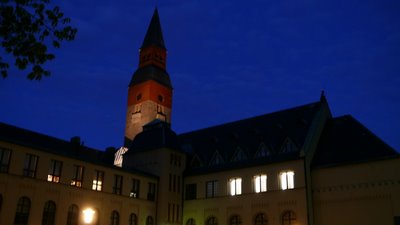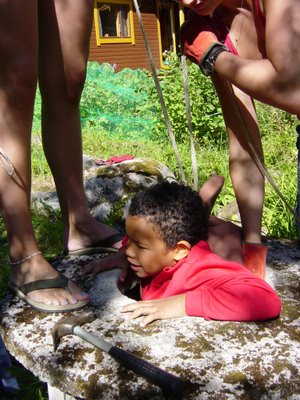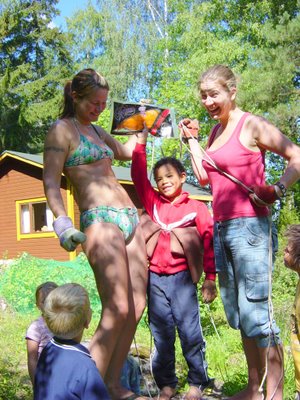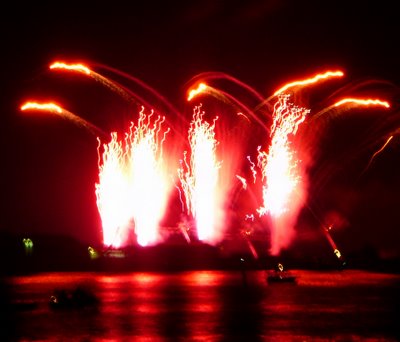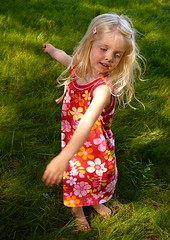 Sunflower Sutra
Sunflower SutraI walked on the banks of the tincan banana dock and
sat down under the huge shade of a Southern
Pacific locomotive to look at the sunset over the
box house hills and cry.
Jack Kerouac sat beside me on a busted rusty iron
pole, companion, we thought the same thoughts
of the soul, bleak and blue and sad-eyed,
surrounded by the gnarled steel roots of trees of
machinery.
The oily water on the river mirrored the red sky, sun
sank on top of final Frisco peaks, no fish in that
stream, no hermit in those mounts, just ourselves
rheumy-eyed and hungover like old bums
on the riverbank, tired and wily.
Look at the Sunflower, he said, there was a dead gray
shadow against the sky, big as a man, sitting
dry on top of a pile of ancient sawdust--
--I rushed up enchanted--it was my first sunflower,
memories of Blake--my visions--Harlem
and Hells of the Eastern rivers, bridges clanking Joes
Greasy Sandwiches, dead baby carriages, black
treadless tires forgotten and unretreaded, the
poem of the riverbank, condoms & pots, steel
knives, nothing stainless, only the dank muck
and the razor-sharp artifacts passing into the
past--
and the gray Sunflower poised against the sunset,
crackly bleak and dusty with the smut and smog
and smoke of olden locomotives in its eye--
corolla of bleary spikes pushed down and broken like
a battered crown, seeds fallen out of its face,
soon-to-be-toothless mouth of sunny air, sunrays
obliterated on its hairy head like a dried
wire spiderweb,
leaves stuck out like arms out of the stem, gestures
from the sawdust root, broke pieces of plaster
fallen out of the black twigs, a dead fly in its ear,
Unholy battered old thing you were, my sunflower O
my soul, I loved you then!
The grime was no man's grime but death and human
locomotives,
all that dress of dust, that veil of darkened railroad
skin, that smog of cheek, that eyelid of black
mis'ry, that sooty hand or phallus or protuberance
of artificial worse-than-dirt--industrial--
modern--all that civilization spotting your
crazy golden crown--
and those blear thoughts of death and dusty loveless
eyes and ends and withered roots below, in the
home-pile of sand and sawdust, rubber dollar
bills, skin of machinery, the guts and innards
of the weeping coughing car, the empty lonely
tincans with their rusty tongues alack, what
more could I name, the smoked ashes of some
cock cigar, the cunts of wheelbarrows and the
milky breasts of cars, wornout asses out of chairs
& sphincters of dynamos--all these
entangled in your mummied roots--and you there
standing before me in the sunset, all your glory
in your form!
A perfect beauty of a sunflower! a perfect excellent
lovely sunflower existence! a sweet natural eye
to the new hip moon, woke up alive and excited
grasping in the sunset shadow sunrise golden
monthly breeze!
How many flies buzzed round you innocent of your
grime, while you cursed the heavens of the
railroad and your flower soul?
Poor dead flower? when did you forget you were a
flower? when did you look at your skin and
decide you were an impotent dirty old locomotive?
the ghost of a locomotive? the specter and
shade of a once powerful mad American locomotive?
You were never no locomotive, Sunflower, you were a
sunflower!
And you Locomotive, you are a locomotive, forget me
not!
So I grabbed up the skeleton thick sunflower and stuck
it at my side like a scepter,
and deliver my sermon to my soul, and Jack's soul
too, and anyone who'll listen,
--We're not our skin of grime, we're not our dread
bleak dusty imageless locomotive, we're all
beautiful golden sunflowers inside, we're blessed
by our own seed & golden hairy naked
accomplishment-bodies growing into mad black
formal sunflowers in the sunset, spied on by our
eyes under the shadow of the mad locomotive
riverbank sunset Frisco hilly tincan evening
sitdown vision.
Allen Ginsberg
Berkeley, 1955

